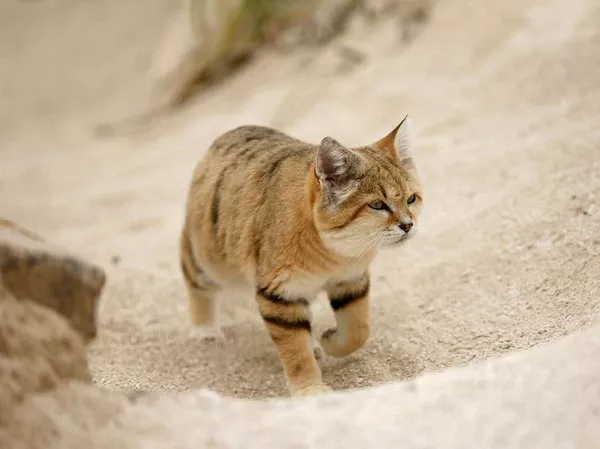Deserts, with their unforgiving landscapes and harsh climates, are home to an array of fascinating creatures. Among these resilient inhabitants, the desert tortoise stands out as a true symbol of survival in the arid wilderness. In this comprehensive guide, we will embark on a journey to uncover the mysteries of the desert tortoise. We will explore its unique characteristics, habitat, behavior, and the challenges it faces. Through this exploration, we will answer the fundamental question, “What is a desert tortoise?”
I. A Prehistoric Relic
The desert tortoise (Gopherus agassizii) is a remarkable reptile belonging to the family Testudinidae. With its prehistoric appearance and sturdy, domed shell, it seems like a living relic of a bygone era. The history of the desert tortoise dates back millions of years, and its unique adaptations have allowed it to endure in the harshest of conditions.
II. Physical Features
Shell of Resilience
What is a desert tortoise without its iconic shell? The shell, composed of fused bone and keratin, serves as a formidable fortress. Its high, domed shape provides protection against predators and extreme temperatures. The tortoise’s shell can vary in color and texture, often matching the shades of the surrounding desert landscape.
Limb Adaptations
In contrast to their aquatic relatives, desert tortoises have well-adapted limbs for life in arid environments. Their limbs are sturdy and clawed, designed for digging burrows, an essential activity for surviving the desert’s extreme temperature fluctuations.
III. The Desert Tortoise’s Habitat
Scorching Home
Desert tortoises inhabit some of the hottest and driest regions in North America, including the Mojave and Sonoran Deserts. These habitats feature vast expanses of barren land, sparse vegetation, and extreme temperature variations.
Burrow Abodes
What is a desert tortoise’s secret to coping with such harsh environments? Their ingenious solution is to create underground burrows, which serve as both shelter from temperature extremes and a safe haven from predators. These burrows can extend several feet below the surface, providing a stable microclimate.
IV. Diet and Adaptations
Herbivores of the Desert
Desert tortoises are herbivores, primarily feasting on a diet of tough, fibrous plants. They are especially fond of succulents, like cacti and agave, which provide them with much-needed hydration in the water-scarce desert. Their ability to metabolize water efficiently is one of their key adaptations.
Estivation
To conserve water during periods of extreme heat and drought, desert tortoises undergo estivation, a state of dormancy similar to hibernation. During estivation, they retreat to their burrows and lower their metabolic rate significantly, sometimes spending months in this state until conditions improve.
V. Unique Behaviors
Solitary Creatures
Desert tortoises are typically solitary animals, and their territories can span several acres. They are known for their slow and deliberate movements, and their solitary lifestyle helps minimize competition for resources in their arid habitat.
Defensive Tactics
What is a desert tortoise’s defense against threats? When they feel threatened, they retract their limbs and head into their shells. Their domed shells provide excellent protection against predators, as well as shelter from extreme weather.
VI. Reproduction and Lifecycle
Courtship and Mating
During the breeding season, male desert tortoises engage in ritualistic combat, pushing and shoving each other in a competition for the attention of females. The successful male mates with the female, and a complex courtship dance ensues.
Nesting and Offspring
Females lay their eggs in shallow nests they excavate in sandy soil. After incubating for several months, the hatchlings emerge from their eggs. They face numerous challenges in their early lives, from predation to temperature extremes.
VII. Conservation Status
Challenges and Threats
Despite their resilience, desert tortoises face an array of challenges in the modern world. Habitat destruction, road mortality, disease, and predation by introduced species are some of the key threats to their survival.
Conservation Efforts
To address these challenges, various conservation initiatives have been launched to protect the desert tortoise and its habitat. Captive breeding programs, habitat restoration, and research efforts are all part of ongoing conservation strategies.
VIII. Interactions with Humans
Native American Traditions
The desert tortoise has held cultural significance for Native American tribes for centuries. It features in traditional stories, art, and as a source of food and materials.
Legal Protections
In recognition of the tortoise’s importance, it has received legal protections. Both federal and state laws in the United States have been enacted to safeguard the desert tortoise and its habitat.
IX. Frequently Asked Questions (FAQ)
1. Are desert tortoises endangered?
While not all populations are endangered, the Mojave desert tortoise (Gopherus agassizii) is listed as threatened under the Endangered Species Act.
2. How long can desert tortoises live?
Desert tortoises are known for their longevity, often living well over 50 years, with some individuals exceeding a century.
3. Do desert tortoises drink water?
Desert tortoises obtain most of their water from the plants they consume, and they have specialized adaptations for conserving water.
4. Why do desert tortoises burrow?
Burrowing provides them with a stable microclimate, protection from predators, and insulation from extreme temperature fluctuations.
5. What are the primary threats to desert tortoises?
The main threats include habitat destruction, road mortality, disease, and predation by non-native species.
6. Can I have a desert tortoise as a pet?
It is illegal to keep a desert tortoise as a pet without proper permits, as they are a protected species.
7. How can I help conserve desert tortoises?
You can support conservation efforts by staying informed, respecting their habitat, and getting involved in local conservation programs.
8. What is the impact of climate change on desert tortoises?
Climate change can exacerbate the challenges desert tortoises face by increasing the frequency and severity of heatwaves and altering their habitats.
Conclusion
The desert tortoise, with its enigmatic existence in some of the world’s harshest environments, continues to be a subject of intrigue and admiration. Its unique adaptations, behaviors, and challenges make it a symbol of resilience and a testament to the wonder of the natural world. As we’ve explored in this comprehensive guide, answering the question, “What is a desert tortoise?” goes beyond mere taxonomy – it encompasses a rich tapestry of history, biology, and conservation efforts that span generations. Understanding and protecting these remarkable creatures is not only a responsibility but a privilege, as it allows us to appreciate the intricate balance of life in one of Earth’s most unforgiving realms.
Related Topics:
What can i feed my desert tortoise?
Do Desert Tortoises Drink Water? You Need to Know
What Vegetables Can Desert Tortoises Eat? All You Need to Know


























